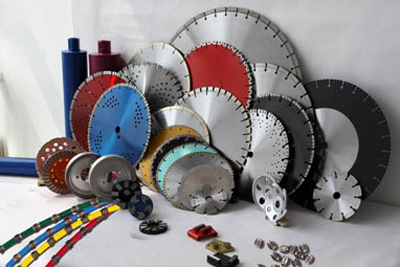
At present, new diamond tools are emerging due to the rapid development of the diamond industry, and some of them have surpassed the traditional cemented carbide tools in performance.

At present, cemented carbide is still the main material for cutting, mining and so on, but it is also facing the danger of some application fields to be replaced by diamond tools.
Diamond is a mineral composed of pure carbon, which is the hardest substance in nature. Diamond has a very wide range of applications, such as cutting tools in the industry and handicrafts. Carbon can form a diamond under high temperature and high pressure.
Synthetic diamond is also called industrial diamond, which has developed rapidly for nearly a decade in China. Its output has accounted for more than 90% of the total amounts because of excellent strength performance. It can be made into relevant diamond tools, mainly used for drilling, cutting, turning, grinding, polishing and lapping in geology, stone material, construction, industrial processing, precision instruments, aerospace, electronics and other fields, also known as super abrasives, which are known as "industrial teeth" collectively with conventional abrasive grains (corundum and silicon carbide), playing an important role for China's economic development.
At present, new diamond tools are emerging due to the rapid development of the diamond industry, and some of them have surpassed the traditional cemented carbide tools in performance. Along with the development of the era and the depletion of metal resources, cemented carbide is facing the danger of some application fields to be replaced by diamonds.
Domestic cemented carbide products have high degree of homogeneity on the quality, and the technical level difference is apparent compared with foreign enterprises. At present, domestic enterprises still cannot do large carbide products, and can only produce small bar materials and plates, which is hard to catch up with the technology gap in short term.